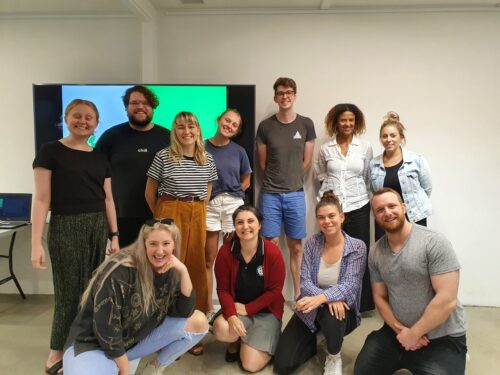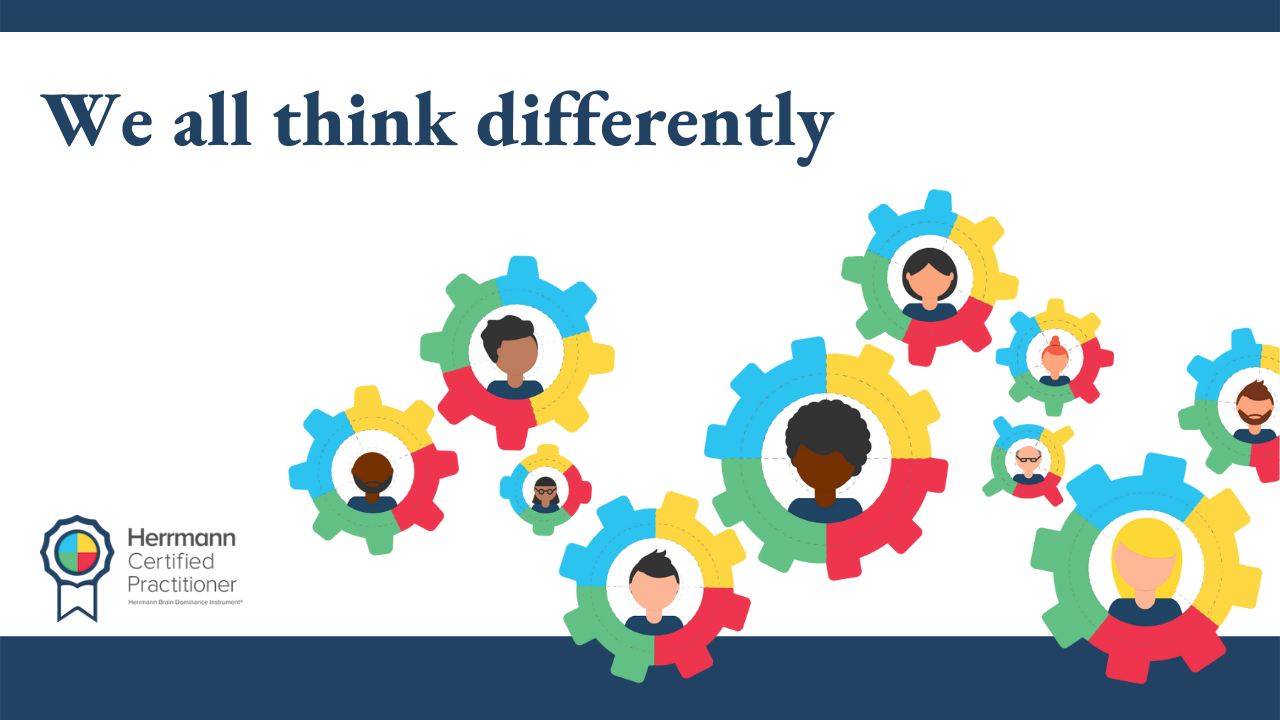Learning preferences and styles are the ones that demonstrate learner diversity, which can be helpful in understanding the different ways we learn. Training materials need to reflect learning preferences. Thinking preferences can assist you for supporting your audience.
An analysis of the audience for training materials
There are a number of ways you can assess your thinking styles, but the Herrmann Brain Dominance Instrument® (HBDI®) is the most widely used. By answering these questions, you will be able to determine your preferred approach to emotional, analytical, structural, and strategic thinking. In addition, individuals gain a greater sense of understanding of themselves as a result of the process. Writing training materials or educational materials for different audiences requires empathy so that we choose the right words in the right sequence, best strategies, and examples that are meaningful and engaging. It is important to be curious if you want to succeed. In order to understand, we must listen. To help us cross the distance between our world, which has its own working assumptions and constraints, and that of the target audience, social marketers need to learn as much as possible about the segment of people they want to influence.
Regardless of the differences between your target audience and your members, you still need to make some generalisations and predictions about your audience in order to create an effective training program. As an example, when we write for others similar to ourselves, we may know a lot about them without even realising it. It is easy for us to distinguish between arguing from a minority point of view and adding to a well-established stream of thought. As we meet our readers at conferences, we have pretty good relationships with them since they often have similar backgrounds and challenges to our own.
A key concept of Herrmann’s is to think with your whole brain
There is no doubt that every individual thinks differently, but few organisations have been able to use cognitive diversity as a strategic advantage.
It is individuals’ thinking styles that determine how they work. A team’s functioning is influenced by how individuals in a group think and act. A company’s ability to succeed depends on how different groups of people think and work together.
In short, an initiative’s success depends on the management team’s ability to communicate effectively, innovate, and increase productivity internally and across functions.
This Whole Brain® Model was developed to decode, harness, and leverage cognitive diversity for teams, individuals, and organisations.
The HBDI®: What does it do?
There are a number of ways you can assess your thinking styles, but the Herrmann Brain Dominance Instrument® (HBDI®) is the most widely used. By answering these questions, you will be able to determine your preferred approach to emotional, analytical, structural, and strategic thinking. In addition, individuals gain a greater sense of understanding of themselves as a result of the process.
HBDI® – Different methods of learning
Learners have different learning preferences. There are many models used to describe these preferences.
Learning preferences and styles are the ones that demonstrate learner diversity, which can be helpful in understanding the different ways we learn. It may also be helpful to know their abilities and use them to improve their learning subjects.
Style refers to the learner’s specific learning preferences and actions based on thinking preferences. One student may learn to listen attentively to the trainer, while another may choose to take notes. One reads effectively by reading a book, while the other student benefits greatly from the charts, graphs, and illustrations that the teacher provides during the talk. It is important to note that people do not have to have the same style. Students can use different styles in different situations, but they tend to be more inclined to what they like.
Thinking and Learning Preferences
College and university studying styles are important for both college and university students, as well as skilled and professional workers as they need to be trained more often and some training may be compulsory, such as health and safety courses.
Coaches have different teaching styles, which may or may not be compatible with your favourite reading. While you may choose a particular teaching method, you cannot expect your trainers to use your favourite style. It is therefore important to be able to adapt to teaching styles.
It is important to note that there is a lot of criticism of the model of learning styles. Some researchers say that there is no evidence that identifying a student’s style of reading and teaching correctly leads to increased student outcomes.
Another criticism is that pointing to one method of learning or the only way to learn and focus on it can lead to the neglect of other learning methods, and this can ultimately affect learning. It is very helpful to think about it this way: when you see the power of learning, use that power by adding extra to your reading strategies. But do not stop using other methods.
For example, if you find that listening is your strength, it may be helpful for you to add listening activities to your study activities, such as downloading lectures and re-listening while doing other activities (bus riding, running, or washing dishes). But listening to lectures on your phone should not take the place of attending classes, practicing homework questions, or working together in study groups – as these are all things that can improve your reading.
Organisational change is more challenging and more common than ever. Dealing with changes due to integration, acquisition, technology, budget, and staff is a top challenge for Learning and Development (L&D) professionals.
But as more staff seek ways to personalise and direct their learning, L&D professionals struggle with how to make it easier. First of all, systems are slow to adapt, so the mere thought of tracking and managing the personal reading of a crowd of any important size can be overwhelming.
Problems go beyond technology and the use of resources, however. Although content writing is an important responsibility of L&D, if you are a reading professional, you know that providing access to information is not the same as developing and nurturing people.
Consider the following ideas and see if the ideas apply to you.
The Whole Brain Model developed by Ned Herrmann is a method that can be used to analyse popular personal and organisational thinking. Humans have a tremendous diversity of ways in which they perceive and combine information, make decisions, and solve problems.
When WHSMS leaders have a popular understanding of staff thinking, they can design the most appropriate safety training and learning resources based on their preferences.
Whole Brain® Thinking advises trainers to develop learning strategies that utilise all areas of the brain where possible. This ensures that your students use the ‘strong’ side of their brain, while challenging and using the most uncontrollable sides.
What is the best way for you to utilise your whole brain?
Originally developed in 1999, Whole Brain Teaching promotes a more dynamic, more focused approach where teachers use challenges such as drama, keywords, and motivational techniques, while seeking continuous spoken feedback from their students to keep them fully engaged every minute.
Whole Brain® Thinking means being able to take full advantage of one’s interests, expanding the quadrants when needed, and adapting to the preferences of those around you to improve performance and results.
No matter what the learning methods are whether it is classroom training, online or virtual training.
Are you embracing all kinds of thinkers? If so, how can you do that?
Having different perspectives within a group can lead to greater problem solving and decision-making capabilities, as well as more innovative thinking. It’s more complicated than just putting diverse people on a team and seeing what happens.
Designing training courses based on the Whole Brain model is a very effective method because it enables the content of the training and flow to be integrated and well-organised as it is based on popular thinking. Online training materials and E-learning training can also be considered apart from classroom training as per the requirement.
Whole Brain model teaching strategies can help teachers deal with many common problems and ensure that all students stay actively involved in the learning process.
We know from thinking preference perspectives that a team with people from a variety of thinking preferences will learn in different ways. Learning and development in organisations can be greatly benefited if they recognise one another’s preferences and how their expertise relates to each other.
A respectful understanding of different thinking approaches will enable members to share their ideas and thoughts freely.
An open team encourages creativity to flourish. By viewing various thinking styles as opportunities instead of obstacles, they become motivated to take advantage of them. In addition, thinking helps people begin a discussion about diversity without judging. Rather than being about behavior, personality, or other attributes, it is just a matter of how someone processes information.
Are you interested?
We can provide you with more information on designing customised training materials upon request. Can’t find what you are looking for. We have variety of elearning courses and training materials.
Find Out More About HBDI Consultation













